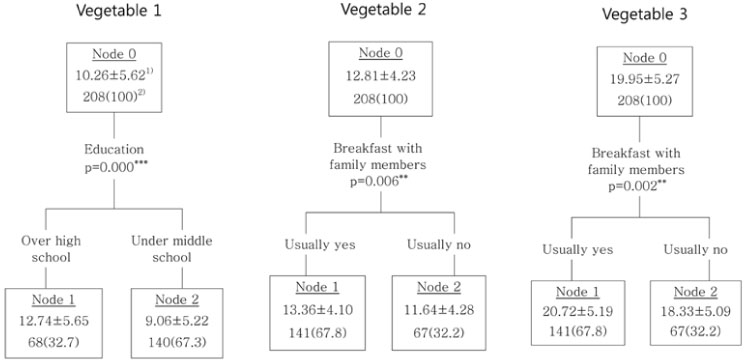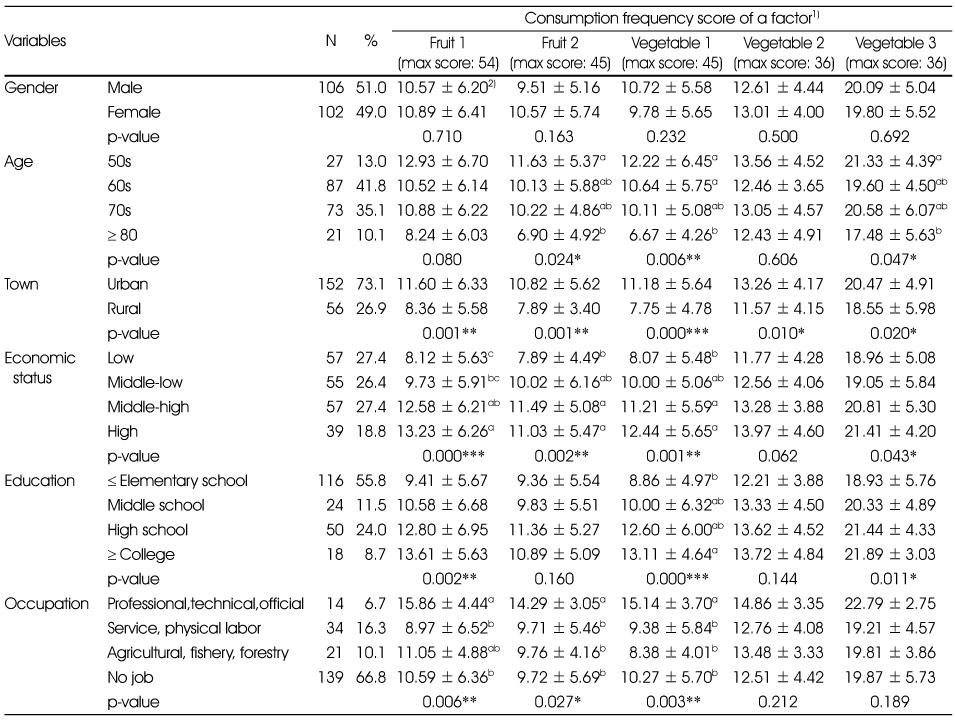References
1. Addo J, Ayerbe L, Mohan KM, Crichton S, Sheldenkar A, Chen R, Wolfe CD, McKevitt C. Socioeconomic status and stroke: an updated review. Stroke 2012;43(4):1186–1191.
2. Avendaño M, Kunst AE, Huisman M, LentheFV , Bopp M, Borrell C, Valkonen T, Regidor E, Costa G, Donkin A, Borgan JK, Deboosere P, Gadeyne S, Spadea T, Andersen O, Mackenbach JP. Educational level and stroke mortality: a comparison of 10 European populations during the 1990s. Stroke 2004;35(2):432–437.
3. Cahill LE, Chiuve SE, Mekary RA, Jensen MK, Flint AJ, Hu FB, Rimm EB. Prospective study of breakfast eating and incident coronary heart disease in a cohort of male US health professionals. Circulation 2013;128(4):337–343.
4. Cox AM, McKevitt C, Rudd AG, Wolfe CD. Socioeconomic status and stroke. Lancet Neurol 2006;5(2):181–188.
5. Dauchet L, Amouyel P, Dallongeville J. Fruit and vegetable consumption and risk of stroke: a meta-analysis of cohort studies. Neurology 2005;65(8):1193–1197.
6. De Gregorio J, Lee JW. Education and income inequality: new evidence from cross-country data. Rev Income Wealth 2002;48(3):395–416.
7. Farshchi HR, Taylor MA, Macdonald IA. Deleterious effects of omitting breakfast on insulin sensitivity and fasting lipid profiles in healthy lean women. Am J Clin Nutr 2005;81(2):388–396.
8. Fjellström K. Mealtime and meal patterns from a cultural perspective. Scand J Nutr 2004;48(4):161–164.
9. Fung TT, Chiuve SE, McCullough ML, Rexrode KM, Logroscino G, Hu FB. Adherence to a DASH-Style diet and risk of coronary heart disease and stroke in women. Arch Intern Med 2008;168(7):713–720.
10. Fung TT, Rexrode KM, Mantzoros CS, Manson JE, Willett WC, Hu FB. Mediterranean diet and incidence of and mortality from coronary heart disease and stroke in women. Circulation 2009;119(8):1093–1100.
11. Fung TT, Stampfer MJ, Manson JE, Rexrode KM, Willett WC, Hu FB. Prospective study of major dietary patterns and stroke risk in women. Stroke 2004;35(9):2014–2019.
12. He FJ, Nowson CA, MacGregor GA. Fruit and vegetable consumption and stroke: meta-analysis of cohort studies. Lancet 2006;367(9507):320–326.
13. He K, Song Y, Daviglus ML, Liu K, Van Horn L, Dyer AR. Fish consumption and incidence of stroke: a meta-analysis of cohort studies. Stroke 2004;35(7):1538–1542.
14. Irala-Estévez JD, Groth M, Johansson L, Oltersdorf U, Prättälä R, Martínez-González MA. A systematic review of socio-economic differences in food habits in Europe: consumption of fruit and vegetables. Eur J Clin Nutr 2000;54(9):706–714.
15. Joshipura KJ, Ascherio A, Manson JE, Stampfer MJ, Rimm EB, Speizer FE, Hennekens CH, Spiegelman D, Willett WC. Fruit and vegetable intake in relation to risk of ischemic stroke. JAMA 1999;282(13):1233–1239.
16. Kang BS, Kim GS. Statistic for social science 3rd edth ed. Seoul: Hannarae; 2011. p. 541–566.
17. Kass GV. An exploratory technique for investigating large quantities of categorical data. Appl Stat 1980;29(2):119–127.
18. Kim EM, Choi MK. An analysis of food consumption patterns of the elderly from the Korea National Health and Nutrition Examination Survey (KNHANES V-1). J Korean Soc Food Sci Nutr 2013;42(5):818–827.
19. Kokubo Y, Iso H, Ishihara J, Okada K, Inoue M, Tsugane S. JPHC Study Group. Association of dietary intake of soy, beans, and isoflavones with risk of cerebral and myocardial infarctions in Japanese populations: the Japan Public Health Center-based (JPHC) study cohort I. Circulation 2007;116(22):2553–2562.
20. Korea Center for Disease Control and Prevention. Korea Health Statistics 2010: Korea National Health and Nutrition Examination Survey (KNHANES V) 2012. cited April 25, 2014. Available from
https://knhanes.cdc.go.kr/knhanes/index.do.
24. Lallukka T, Pitkäniemi J, Rahkonen O, Roos E, Laaksonen M, Lahelma E. The association of income with fresh fruit and vegetable consumption at different levels of education. Eur J Clin Nutr 2010;64(3):324–327.
25. Larsson SC, Virtamo J, Wolk A. Coffee consumption and risk of stroke in women. Stroke 2011;42(4):908–912.
26. Larsson SC, Virtamo J, Wolk A. Chocolate consumption and risk of stroke: a prospective cohort of men and meta-analysis. Neurology 2012;79(12):1223–1229.
27. Lee DP, Park SH, Kim TY, Seong JI, Shin EJ, Kim JH. An analysis of the reasons for income and development gap between urban and rural regions Seoul: Korea Rural Economy Institute; 2004. p. 70–73.
28. Lee KI, Hwang YJ, Kim DW, Ban HJ, Park IH. The consumer behavior survey for food Seoul: Korea Rural Economy Institute; 2013. p. 211–212.
29. Liese AD, Weis KE, Pluto D, Smith E, Lawson A. Food store types, availability, and cost of foods in a rural environment. J Am Diet Assoc 2007;107(11):1916–1923.
30. Liu S, Manson JE, Stampfer MJ, Rexrode KM, Hu FB, Rimm EB, Willett WC. Whole grain consumption and risk of ischemic stroke in women: a prospective study. JAMA 2000;284(12):1534–1540.
31. Lutfiyya MN, Chang LF, Lipsky MS. A cross-sectional study of US rural adults’ consumption of fruits and vegetables: do they consume at least five servings daily? BMC Public Health 2012;12:280.
32. Mekary RA, Giovannucci E, Willett WC, van Dam RM, Hu FB. Eating patterns and type 2 diabetes risk in men: breakfast omission, eating frequency, and snacking. Am J Clin Nutr 2012;95(5):1182–1189.
33. Mizrahi A, Knekt P, Montonen J, Laaksonen MA, Heliövaara M, Järvinen R. Plant foods and the risk of cerebrovascular diseases: a potential protection of fruit consumption. Br J Nutr 2009;102(7):1075–1083.
35. Oude Griep LM, Verschuren WM, Kromhout D, Ocké MC, Geleijnse JM. Colors of fruit and vegetables and 10-year incidence of stroke. Stroke 2011;42(11):3190–3195.
36. Oude Griep LM, Verschuren WM, Kromhout D, Ocké MC, Geleijnse JM. Raw and processed fruit and vegetable consumption and 10-year stroke incidence in a population-based cohort study in the Netherlands. Eur J Clin Nutr 2011;65(7):791–799.
37. Park KA, Kim JS, Choi SM. Study on altered food preference and food frequency in stroke patients. Korean J Nutr 2003;36(6):622–634.
38. Park TH, Kim MK, Lee KB, Park JM, Lee SJ, Jung KW, Cho YJ, Lee JS, Lee JY, Bae HJ. Prevalence of risk factors for ischemic stroke in Korean: a systematic review. J Korean Neurol Assoc 2009;27(1):19–27.
39. Park Y. Intakes of vegetables and related nutrients such as vitamin B complex, potassium, and calcium, are negatively correlated with risk of stroke in Korea. Nutr Res Pract 2010;4(4):303–310.
40. Sacco RL. Secondary prevention of ischemic stroke: a 1998 US perspective. Cerebrovasc Dis 1999;9suppl 3. :37–44.
41. Sacco RL, Elkind M, Boden-Albala B, Lin IF, Kargman DE, Hauser WA. The protective effect of moderate alcohol consumption on ischemic stroke. JAMA 1999;281(1):53–60.
42. Sauvaget C, Nagano J, Allen N, Kodama K. Vegetable and fruit intake and stroke mortality in the Hiroshima/Nagasaki life span study. Stroke 2003;34(10):2355–2360.
43. Sidenvall B, Nydahl M, Fjellström C. The meal as a gift-the meaning of cooking among retired women. JAppl Gerontol 2000;19(4):405–423.
44. Sofi F, Abbate R, Gensini GF, Casini A. Accruing evidence on benefits of adherence to the Mediterranean diet on health: an updated systematic review and meta-analysis. Am J Clin Nutr 2010;92(5):1189–1196.
45. Sung SJ, Jung DG, Lee WK, Kim YJ, Lee HS. Life style and eating behavior of stroke patients in Daegu and Gyeongbukprovince, Korea. J Korean Soc Food Sci Nutr 2009;38(3):319–332.
46. Sung SJ, Jung DG, Lee WK, Kim YJ, Lee HS. Analysis of relative risk of stroke by nutrient intake levels: case-control study in Daegu Gyeongbuk area, Korea. J Korean Soc Food Sci Nutr 2009;38(8):1050–1061.
47. United States Department of Health and Human Services and United States Department of Agriculture. Dietary guidelines for americans 7th edth ed. Washington DC: United States Government Printing Office; 2010. p. 79–80.
48. Van der Heijden AA, Hu FB, Rimm EB, Van dam RM. A prospective study of breakfast consumption and weight gain among U.S. men. Obesity (Silver Spring) 2007;15(10):2463–2469.
49. Zhang Y, Tuomilehto J, Jousilahti P, Wang Y, Antikainen R, Hu G. Lifestyle factors on the risks of ischemic and hemorrhagic strokes. Arch Intern Med 2011;171(20):1811–1818.



